You have to admit that miso soup sounds a little weird. If you tried to described the ingredients to a friend who didn’t know what it was, I imagine the conversation would go something like this…
“Miso soup? What’s that?”
“You know, miso. It’s made by grinding soybeans into a paste and allowing them to ferment for a year or more.”
“Uhh…”
“Oh, and then you add in a few tree fungi (shiitake mushrooms), some vegetables that were pulled out of the ocean (wakame seaweed), and the coagulated extract of soybeans (tofu).”
When you put it that way, it doesn’t exactly whet your appetite. The ingredients of miso soup are a little bizarre. But in true Japanese fashion, the individual components of miso come together in perfect harmony when prepared with the right care. The result is a balanced and flavorful soup that is unlike anything else.
Plus, miso soup is packed with some of the world’s healthiest foods. From the cancer-preventing miso paste, to the anti-inflammatory and immune boosting shiitake mushrooms, to the vitamin-rich seaweed, and more. It’s a powerhouse of nutrients. If you’re feeling under the weather this holiday season, reach for a bowl of miso to boost your spirits and help your body recover faster. Chicken-noodle-what?
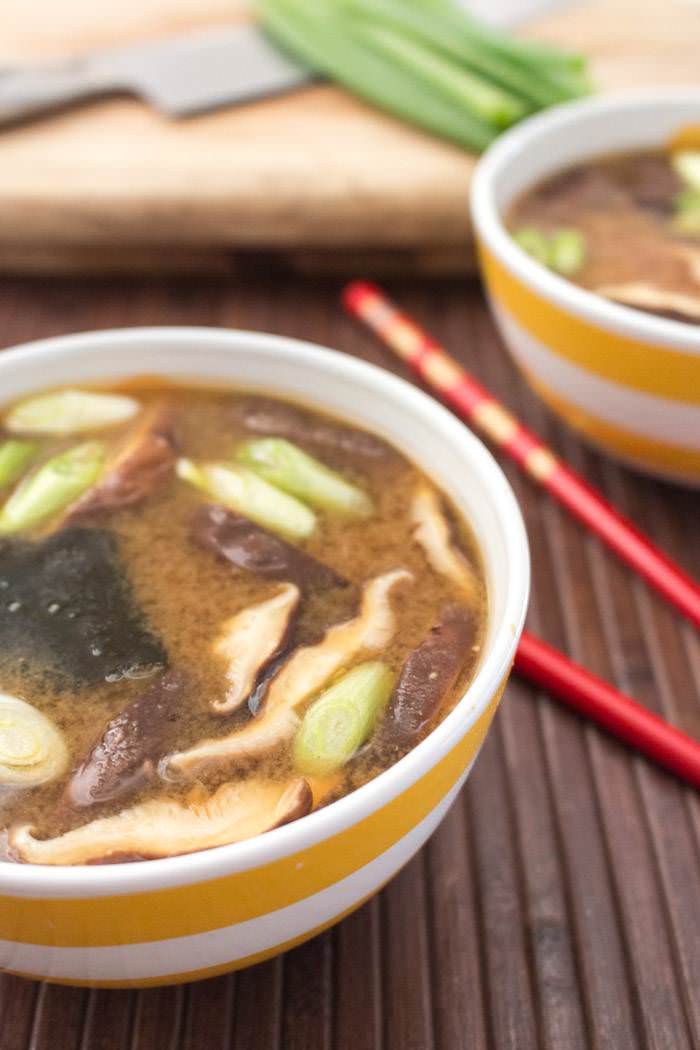
Makes 2 bowls
Ingredients:
- 2 cups vegetarian dashi (below)
- 2 tablespoons miso paste
- 1 tablespoon dried wakame seaweed
- 1/2 cup sliced shiitake mushrooms
- 3 sliced green onions
- 1/3 cup cubed tofu
A Good Miso Starts with a Good Dashi
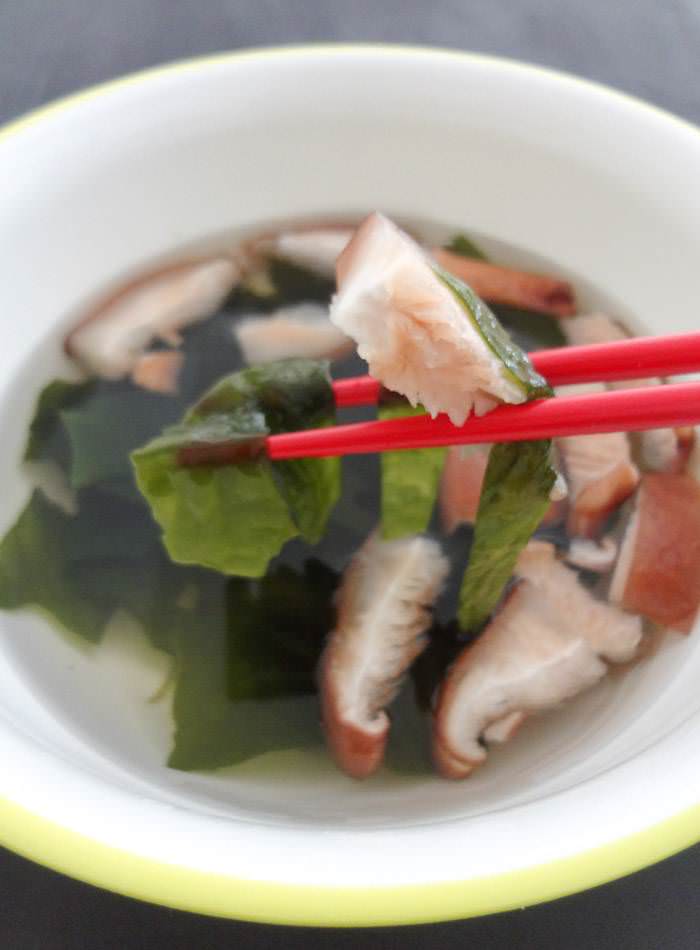
“Dashi” is a Japanese sea vegetable stock. It’s the primary base for any miso soup. The traditional version is made with bonito (fish) flakes and kombu seaweed. However, a vegetarian version can be made by simply replacing the bonito with a diced shiitake mushroom. Here’s how to do it:
- Add 2 1/2 cups of water to a saucepan and warm over low heat.
- Add 1 large diced shiitake mushroom to the pan
- Soak 1 tablespoon dried wakame seaweed in water to reconstitute for a few minutes, then add to the saucepan
- Allow these ingredients to simmer over low heat for about 10 minutes, then remove from the heat and let sit for 30-90 minutes for the water to fully absorb the flavors.
- Finally, strain through a cheesecloth or strainer and squeeze all the water out of the mushrooms and seaweed.
This can be made in advance, and in even larger quantities. Store refrigerated in a sealed container for up to a week.
A note about seaweed varieties… Dashi is traditionally made with a type of seaweed called kombu, but the type of seaweed added to the finished soup is a different variety called wakame. The two are fairly similar, and for simplicity’s sake I prefer to just keep one version (wakame) on hand and use that for both purposes. Wakame can be found in most grocery stores like Whole Foods and is typical sold in dried flakes. Eden Foods makes a great version.
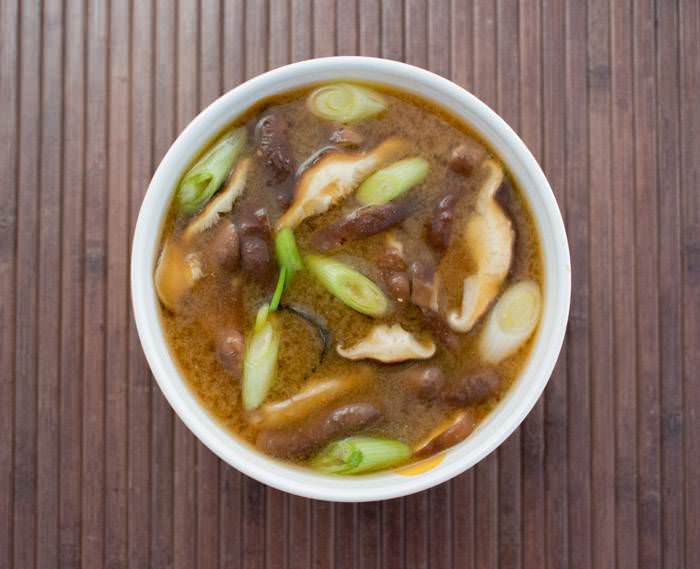
How to Make Miso Soup
With the dashi on hand, making a miso soup is incredibly easy and can be done in under 10 minutes. Here’s how:
- Prep the ingredients. Slice the shiitake mushrooms, slice the green onions, and rehydrate about 1 tablespoon dried wakame in a little warm water.
- In a saucepan, bring about 2 cups of dashi to a simmer. Add the mushrooms, wakame, and tofu.
- In a small bowl, measure two tablespoons of miso paste and cover with a small amount of the warm dashi. Stir the miso until fully dissolved in this bowl. Many people will simply add the dashi into the saucepan, where it has a hard time fully dissolving. By doing this in a separate bowl, we ensure a more consistent texture.
- Pour the miso into the saucepan and carefully watch as you bring to a gentle boil. The moment it reaches a boil, turn the heat down and allow to gently simmer for about 5 more minutes.
- Divide the soup between two bowls and top with a few sliced green onions.
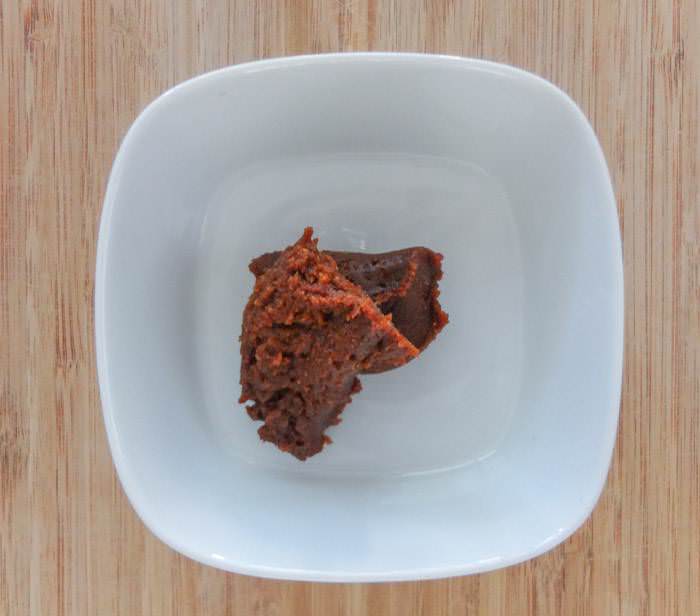
The Perfect Miso Soup: A Checklist
To make the best miso soup every time, follow these rules:
- Start with a good, fresh, homemade dashi. If you try to use water as your base, I will jump out of your cupboard and yell at you.
- Use about 1 tablespoon miso paste per cup of dashi.
- For even more developed flavors, consider mixing two varieties of miso paste; white and brown, yellow and red, etc.
- Don’t let the miso paste boil for longer than 10 seconds or the subtle flavors start to erode,
- You can add any ingredients you like, but a combination of wakame seaweed and mushrooms always works well.
- No matter what ingredients you use, you can never go wrong garnishing miso with sliced green onions.
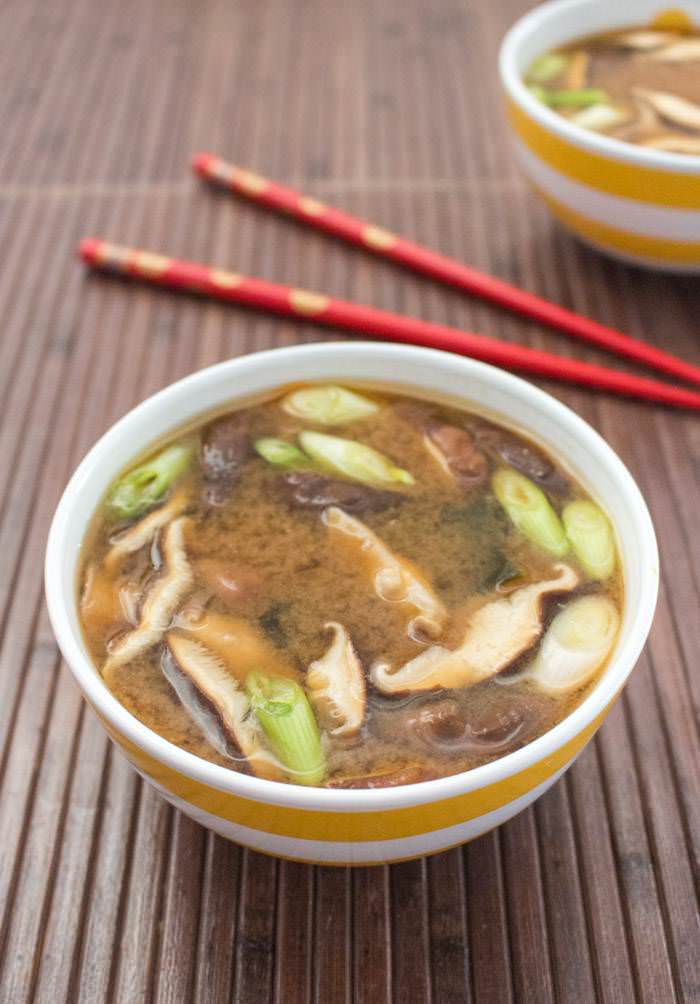




OMG where were you when I made my first miso soup with water?!? I’m like this is NOT what this should taste like haha so I’ve just been using my miso paste for salad dressings which is really yummy as well!
So the seaweed is that the same stuff that I roll my sushi with or a different kind? I’ve seen those Eden products at the health food store it seems like so many different varieties of seaweed.
I will attempt this miso soup again! I can drink that stuff all day long
Haha, don’t worry. I used water in the past as well… I guess we both learned our lesson. 🙂 I have never made a miso dressing but that does sound really good!
Yes, there are many varieties of seaweed and the kind used to wrap sushi is nori, which is very different from wakame. Nori is flat (even in water) whereas wakame gets thicker and more gel-like. Dried wakame seems super expensive for a small package, but you need such a small amount that it lasts forever.
i love miso soup! and you’re correct in recommending wakame instead of kombu (kelp) as dr greger says kombu contains too much iodine.
http://nutritionfacts.org/video/too-much-iodine-can-be-as-bad-as-too-little/
Hey Brad, thanks for that link! I love Dr. Greger but I hadn’t seen that video. Glad I (accidentally) recommended the right kind of seaweed 🙂
I’m a Korean who’ve also lived in Japan before, but it’s usually Kombu that’s used as broth 🙂 wakame is added for the actual soup later! Anyways, thank you for the recipe! Looks simple & delicious <3
Hi Stephanie, thanks for the comment! You’re right about that, but I actually mention in the post why I use wakame instead of kombu in the broth – it’s much more convenient. 🙂
Could you please suggest one or two specific miso pastes? I am new to miso, and I have no idea which ones have the best flavor.
If you’re lucky enough to have a market that stocks more than one type of miso, that’s awesome! The specific varieties won’t matter *too* much, but I’d probably stick with one dark and one light for best results.
Thank you for the reply. Yes, I know you wouldn’t necessarily associate Oklahoma with Asian fare, but we are blessed to have a HUGE Asian grocery store in OKC as well as several new grocery stores geared towards healthy eating. So, now I guess I’ll just have to sample my way through all the miso options I have available to me. It’s a great problem to have! Love your website. Thanks for sharing your recipes and ideas!
Hello! Silly question, do you eat the mushrooms and wakame from the broth in the soup or do you tie them away? I’m asking because of the straining of the broth. Thank you!
I do strain out and throw away the mushrooms and wakame. After steeping in the broth, they don’t have much left to give.
Can you just buy this soup somewhere?